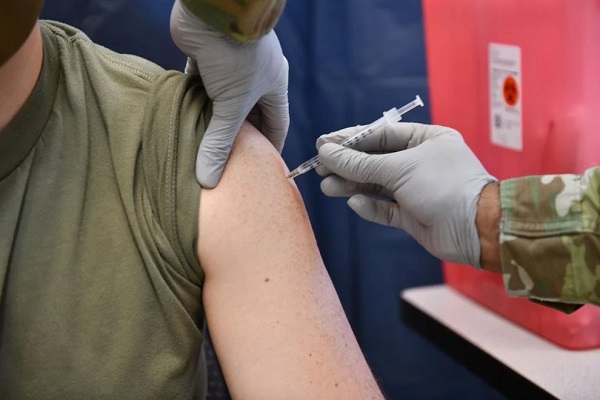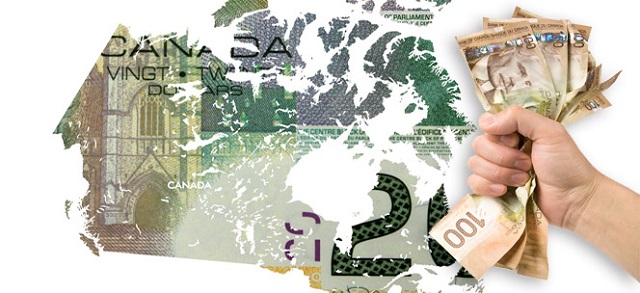Frontier Centre for Public Policy
Is the Price of Reconciliation that we Must Pretend to Believe a Lie?

From the Frontier Centre for Public Policy
Even the Kamloops band is backing away from its most extreme claim, that ‘bodies were found’
The price we are being told that we must pay to achieve “reconciliation” is becoming clear. We must pretend to believe a lie.
The lie is that 215, and then thousands, of indigenous students of residential schools were “disappeared” while at the schools — that they died under sinister circumstances while under the care of the priests, nuns and teachers running the schools, and were buried in secrecy.
To top it off, it is claimed that fellow students — “as young as six” — were forced by these evil priests to dig the graves. The fact that there is not one scintilla of good evidence to support this deeply anti-Catholic blood libel is not supposed to deter us from accepting it as fact. We are being told that we must pretend to believe this lie if we want to achieve “reconciliation”.
If there was any doubt that the Assembly of First Nations (AFN) was insisting that Canadians must pretend to believe the false claim, it was dispelled when they angrily rejected the funding cap that the federal government had placed on its ill-considered promise to provide a total of $320 million to indigenous communities that chose to go on their own “missing children/unmarked graves” search.
The chiefs showed who was boss, and the federal government meekly submitted, and cancelled the funding cap.
The government coffers were left wide open, and indigenous communities expanded existing searches for “missing children.” In reality these children were never missing. As Tom Flanagan explains in Grave Error (above), they were “forgotten children” who had been properly buried in marked graves that were subsequently left untended and forgotten by their families.
Be that as it may, as a result of AFN activism, and government and media incompetence, the Kamloops claim morphed into an officially sanctioned lie.
But where is the truth in all of this?
Most of us knew, even when this claim was first made in 2021, that these grisly tales of sinister deaths and secret burials could not possibly be true.
There is simply no historical record of any such thing occurring.
There are no records of parents frantically looking for children who suddenly went missing from residential schools, no police reports of missing children. Nothing.
In fact the extensive records we do have say exactly the opposite — namely that the deaths of children who sadly died of the diseases of the day at residential schools were all properly recorded, and that almost all of the deceased children were buried by their parents on their home reserves.
The small minority who were buried in special school cemeteries, (because the transportation of the bodies back to remote reserves was impractical,) all received Christian burials. Their places of burial were made known to their parents. The fact is that record keeping of indigenous children at residential schools was far superior to record keeping of the children on reserves, where far greater numbers died of exactly the same diseases.
But for reasons best left to future historians to ponder the Trudeau government and its CBC media ally immediately accepted the crackpot Kamloops claim as true. CBC and other gullible media went into overdrive pumping out misinformation in support of the baseless claim, while the Trudeau government ordered all flags on federal buildings across Canada lowered, where they remained for six months!
Trudeau’s indigenous affairs minister, Marc Miller — perhaps the worst Indian Affairs minister in the history of this country — recklessly promised $320 million to indigenous communities that wanted to make similar claims. And, of course, others did almost immediately.
Down the road, Chief Willie Sellars, of the Williams Lake indigenous community, outdid the rhetoric of his colleague, Chief Casimir. According to Sellars, priests had not only killed countless indigenous children, but had thrown their bodies into “rivers, streams and lakes” as well as the usual old standards of throwing bodies into school furnaces and incinerators. Other communities wanting in on the money jumped onto the bandwagon with increasingly fantastical tales.
The result of this Trudeau government recklessness — aided by a gullible media that asked no questions — was predictable. These false stories became etched in stone as the truth within the indigenous community. A victim mentality that was already deeply imbedded became pathological, as indigenous communities became convinced — on evidence that was entirely false — that they were victims of a genocide committed by their neighbours.
The chiefs also silenced the many thoughtful members within their communities who knew that these stories of murderous priests were not true. As investigative reporter, Terry Glavin, explains, even among the Tk’emlups community there were always sensible voices who did not believe those claims:
“From the outset, even among Tk’emlúps people there was a great deal of skepticism and disbelief in stories about nuns waking children in the middle of the night to bury their murdered classmates under the light of the moon”
But instead of heeding those sensible indigenous voices, and even as it became increasingly clear to Canadians that these stories were just tall tales, there was so much money in it that the chiefs doubled down. They insisted that Canadians must pretend to believe that the claims were true.
That would be their price for “reconciliation”.
As noted above, the weak Liberal government gave into this blackmail by removing the funding cap on searches it had tried to impose. But other important institutions cravenly played along with what was now an officially sanctioned lie as well.
Jon Kay explains in his recent Quillette essay how the Law Society of British Columbia is now insisting that anyone who wants to be a lawyer in that province must pretend to believe the “evil priest” line of stories.
Other law schools and law societies across Canada are doing this as well. They are so focused on what they perceive as the holy grail of “reconciliation” that they are prepared to sacrifice a pursuit of truth as their goal, and force their own students — our future lawyers and judges — to do the same.
Our public schools — to bring about “reconciliation — are indoctrinating our children with lessons about the “215 Kamloops graves” and other misinformation, such as the “Charlie Wenjack” story.
Children are taught that Wenjack was abused by Catholic priests and nuns in his residential school, and ran away as a result.
In fact, as author and historian Robert MacBain explains in his important book, “The Lonely Death Of An Ojibway Boy” Charlie Wenjack lived at a Protestant hostel run by a kindly indigenous family, attended school by the day in Kenora, and probably never saw a residential school, or met a priest or nun, in his life.
But, in the interests of “reconciliation” our children are being misinformed by their teachers.
And when a teacher does dare to tell the truth, as when B.C. teacher, Jim McMurtry told his students that the children who died in residential schools died of the diseases of the day — and were not tortured to death, as was being reported — he was frogmarched from his classroom, and summarily fired.
Or Frances Widdowson, who was fired from her tenured university position largely for daring to dispute what was becoming an increasingly extreme residential school narrative.
All of this obvious unfairness, is happening in the name of “reconciliation.” The senior lawyers who oversee the Law Society, and the educators who select our children’s school curricula are doing a great disservice to this country. As are our MPs who foolishly labelled Canada as genocidal, based on the same false Kamloops claim.
As are our senior indigenous leaders, who know by know that the murderous, secret-burying priest story has always been just a silly ghost story that children tell to scare one another. Yet they insist that Canadians must pretend to believe it, or they will withhold the “reconciliation” that they wield like a sledge hammer over our heads.
It should have occurred to everyone by now that if the price of “reconciliation” is pretending to believe a lie, the price is far too high. That kind of “reconciliation” is worth nothing.
In actual fact, what this country and its indigenous population needs is not “reconciliation” at all. Too many indigenous people are stuck at the bottom of the socioeconomic ladder. What they need is not “reconciliation” but integration into the economy, and the opportunity to participate in it. As for the opportunists who exploit a false claim to benefit themselves, they deserve only our contempt.
What nobody needs is a country where citizens must lie to each other in order to stay together.
And now, to add insult to injury, MP Leah Gazan wants to make it a law that we must all lie to each other by criminalizing what she calls “residential school denialism”. She specifically singles out the Kamloops claim as something Canadians must accept as true. As she sees it any Canadian who refuses to do so, or who dares to suggest that the positives, as well as the negatives of residential schooling should be recognized, should be made a criminal. Dostoevsky famously asked if there will come a time “when intelligent people will be banned from thinking, so as not to offend the imbeciles”. Has that time arrived?
Brian Giesbrecht, retired judge, is a Senior Fellow at the Frontier Centre for Public Policy.
Education
Our Kids Are Struggling To Read. Phonics Is The Easy Fix
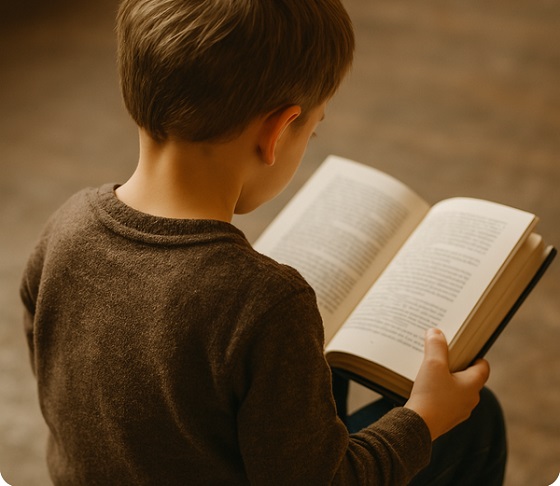
From the Frontier Centre for Public Policy
One Manitoba school division is proving phonics works
If students don’t learn how to read in school, not much else that happens there is going to matter.
This might be a harsh way of putting it, but it’s the truth. Being unable to read makes it nearly impossible to function in society. Reading is foundational to everything, even mathematics.
That’s why Canadians across the country should be paying attention to what’s happening in Manitoba’s Evergreen School Division. Located in the Interlake region, including communities like Gimli, Arborg and Winnipeg Beach, Evergreen has completely overhauled its approach to reading instruction—and the early results are promising.
Instead of continuing with costly and ineffective methods like Reading Recovery and balanced literacy, Evergreen has adopted a structured literacy approach, putting phonics back at the centre of reading instruction.
Direct and explicit phonics instruction teaches students how to sound out the letters in words. Rather than guessing words from pictures or context, children are taught to decode the language itself. It’s simple, evidence-based, and long overdue.
In just one year, Evergreen schools saw measurable gains. A research firm evaluating the program found that five per cent more kindergarten to Grade 6 students were reading at grade level than the previous year. For a single year of change, that’s a significant improvement.
This should not be surprising. The science behind phonics instruction has been clear for decades. In the 1960s, Dr. Jeanne Chall, director of the Harvard Reading Laboratory, conducted extensive research into reading methods and concluded that systematic phonics instruction produces the strongest results.
Today, this evidence-based method is often referred to as the “science of reading” because the evidence overwhelmingly supports its effectiveness. While debates continue in many areas of education, this one is largely settled. Students need to be explicitly taught how to read using phonics—and the earlier, the better.
Yet Evergreen stands nearly alone. Manitoba’s Department of Education does not mandate phonics in its public schools. In fact, it largely avoids taking a stance on the issue at all. This silence is a disservice to students—and it’s a missed opportunity for genuine reform.
At the recent Manitoba School Boards Association convention, Evergreen trustees succeeded in passing an emergency motion calling on the association to lobby education faculties to ensure that new teachers are trained in systematic phonics instruction. It’s a critical first step—and one that should be replicated in every province.
It’s a travesty that the most effective reading method isn’t even taught in many teacher education programs. If new teachers aren’t trained in phonics, they’ll struggle to teach their students how to read—and the cycle of failure will continue.
Imagine what could happen if every province implemented structured literacy from the start of Grade 1. Students would become strong readers earlier, be better equipped for all other subjects, and experience greater success throughout school. Early literacy is a foundation for lifelong learning.
Evergreen School Division deserves credit for following the evidence and prioritizing real results over educational trends. But it shouldn’t be alone in this.
If provinces across Canada want to raise literacy rates and give every child a fair shot at academic success, they need to follow Evergreen’s lead—and they need to do it now.
All students deserve to learn how to read.
Michael Zwaagstra is a public high school teacher and a senior fellow at the Frontier Centre for Public Policy.
Economy
Support For National Pipelines And LNG Projects Gain Momentum, Even In Quebec

From the Frontier Centre for Public Policy
Public opinion on pipelines has shifted. Will Ottawa seize the moment for energy security or let politics stall progress?
The ongoing threats posed by U.S. tariffs on the Canadian economy have caused many Canadians to reconsider the need for national oil pipelines and other major resource projects.
The United States is Canada’s most significant trading partner, and the two countries have enjoyed over a century of peaceful commerce and good relations. However, the onset of tariffs and increasingly hostile rhetoric has made Canadians realize they should not be taking these good relations for granted.
Traditional opposition to energy development has given way to a renewed focus on energy security and domestic self-reliance. Over the last decade, Canadian energy producers have sought to build pipelines to move oil from landlocked Alberta to tidewater, aiming to reduce reliance on U.S. markets and expand exports internationally. Canada’s dependence on the U.S. for energy exports has long affected the prices it can obtain.
One province where this shift is becoming evident is Quebec. Historically, Quebec politicians and environmental interests have vehemently opposed oil and gas development. With an abundance of hydroelectric power, imported oil and gas, and little fossil fuel production, the province has had fewer economic incentives to support the industry.
However, recent polling suggests attitudes are changing. A SOM-La Presse poll from late February found that about 60 per cent of Quebec residents support reviving the Energy East pipeline project, while 61 per cent favour restarting the GNL Quebec natural gas pipeline project, a proposed LNG facility near Saguenay that would export liquefied natural gas to global markets. While support for these projects remains stronger in other parts of the country, this represents a substantial shift in Quebec.
Yet, despite this change, Quebec politicians at both the provincial and federal levels remain out of step with public opinion. The Montreal Economic Institute, a non-partisan think tank, has documented this disconnect for years. There are two key reasons for it: Quebec politicians tend to reflect the perspectives of a Montreal-based Laurentian elite rather than broader provincial sentiment, and entrenched interests such as Hydro-Québec benefit from limiting competition under the guise of environmental concerns.
Not only have Quebec politicians misrepresented public opinion, but they have also claimed to speak for the entire province on energy issues. Premier François Legault and Bloc Québécois Leader Yves-François Blanchet have argued that pipeline projects lack “social licence” from Quebecers.
However, the reality is that the federal government does not need any special license to build oil and gas infrastructure that crosses provincial borders. Under the Constitution, only the federal Parliament has jurisdiction over national pipeline and energy projects.
Despite this authority, no federal government has been willing to impose such a project on a province. Quebec’s history of resisting federal intervention makes this a politically delicate issue. There is also a broader electoral consideration: while it is possible to form a federal government without winning Quebec, its many seats make it a crucial battleground. In a bilingual country, a government that claims to speak for all Canadians benefits from having a presence in Quebec.
Ottawa could impose a national pipeline, but it doesn’t have to. New polling data from Quebec and across Canada suggest Canadians increasingly support projects that enhance energy security and reduce reliance on the United States. The federal government needs to stop speaking only to politicians—especially in Quebec—and take its case directly to the people.
With a federal election on the horizon, politicians of all parties should put national pipelines and natural gas projects on the ballot.
Joseph Quesnel is a senior research fellow with the Frontier Centre for Public Policy.
-

 2025 Federal Election2 days ago
2025 Federal Election2 days agoASK YOURSELF! – Can Canada Endure, or Afford the Economic Stagnation of Carney’s Costly Climate Vision?
-

 Alberta2 days ago
Alberta2 days agoMade in Alberta! Province makes it easier to support local products with Buy Local program
-

 2025 Federal Election2 days ago
2025 Federal Election2 days agoCSIS Warned Beijing Would Brand Conservatives as Trumpian. Now Carney’s Campaign Is Doing It.
-
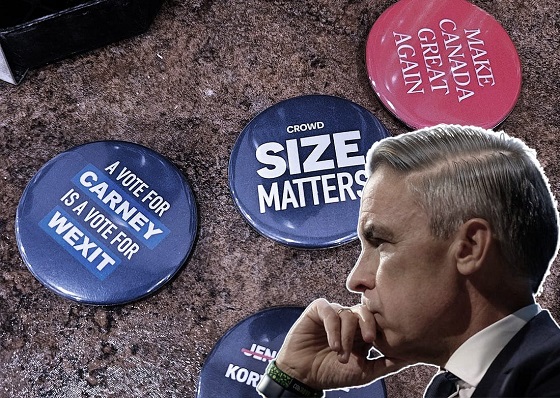
 2025 Federal Election2 days ago
2025 Federal Election2 days agoInside Buttongate: How the Liberal Swamp Tried to Smear the Conservative Movement — and Got Exposed
-

 Bruce Dowbiggin1 day ago
Bruce Dowbiggin1 day agoIs HNIC Ready For The Winnipeg Jets To Be Canada’s Heroes?
-
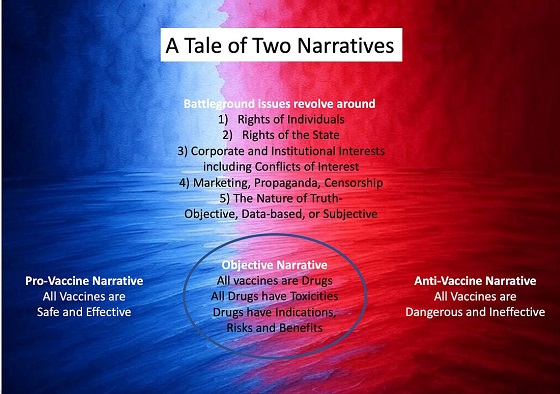
 Dr. Robert Malone1 day ago
Dr. Robert Malone1 day agoThe West Texas Measles Outbreak as a Societal and Political Mirror
-

 COVID-191 day ago
COVID-191 day agoCOVID virus, vaccines are driving explosion in cancer, billionaire scientist tells Tucker Carlson
-

 Health1 day ago
Health1 day agoHorrific and Deadly Effects of Antidepressants



